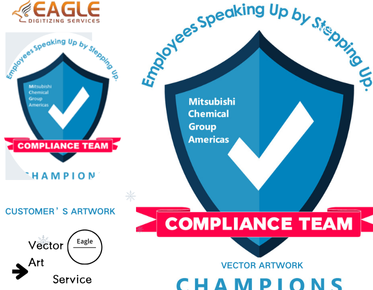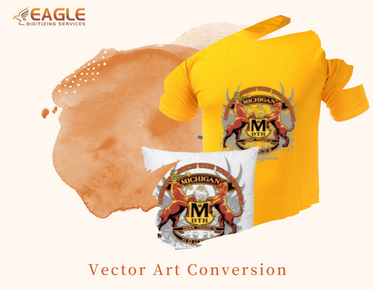The Steps in Screen Printing
Screen printing is a versatile and popular printing method used to apply designs to various substrates, including textiles, ceramics, and more. This process involves several key steps that culminate in the transfer of ink to a subtrate through a mesh screen to reveal the desired design. In this comprehensive guide, I’ll walk you through each step of the screen printing process.
Step 1: Designing the Artwork
The first step in screen printing is creating the image or design you wish to print. This design is usually created digitally using software like Adobe Illustrator or CorelDRAW. The design must be finalized and converted into a vector format because vector graphics maintain clarity and detail at any size. Companies like Eagle Digitizing offer vector art services to ensure your design is ready for printing.
Step 2: Preparing the Screen
Once the design is ready, the next step is preparing the screen. The screen is a mesh stretched over a frame, usually made of wood or aluminum. A light-sensitive emulsion is applied to the mesh, and it is allowed to dry in a dark environment. This emulsion will later be hardened, except where the design will appear.
Step 3: Exposing the Screen
The screen is then placed in an exposure unit, where a film positive of the design is laid on top of it. The screen is exposed to intense light. The light hardens the emulsion except in areas shaded by the design on the film positive. After exposure, the soft areas are washed away, leaving a stencil of your design.
Step 4: Setting Up the Press
The prepared screen is then fixed onto a printing press. The press aligns the screen on a flat substrate like a T-shirt or a piece of ceramic. It is crucial that the screen is aligned correctly to ensure the design prints accurately on the substrate.
Step 5: Printing the Design
Before printing, ink is pushed across the mesh using a squeegee—forces the ink to move through the open areas of the mesh and transfer onto the substrate to create the desired imprint. If your design consists of multiple colors, each color must be printed separately, often requiring different screens and allowing the ink to dry between applications. The process requires precision; the use of a reliable vector logo conversion aids in achieving quality prints with sharp lines and vibrant colors.
Step 6: Curing the Ink
After printing, the ink needs to be cured to set the design permanently. This step typically involves exposing the freshly-printed substrate to high temperatures in a dryer, which dries the ink and makes it colorfast and wash-resistant. Proper curing is essential for durability and color retention.
Step 7: Quality Control
The final step in screen printing is quality control. Check each piece for faults like misalignment, incomplete prints, or ink stains and ensure that it meets the required standards. This step guarantees high quality in the final product, whether it’s a single item or a full batch of items each displaying your unique design.
Additional Services and Considerations
Having a trusted service provider like Eagle Digitizing can facilitate the process of preparing high-quality artwork for screen printing. They offer expert vectorizing services to ensure your designs are effectively converted into a format suitable for screen printing. This kind of service is a boon for businesses dependent on precision and reliability.
Future Trends in Screen Printing
As technology continues to evolve, the screen printing industry is poised to incorporate more digital techniques, improving efficiency and detail in prints. Enhanced software solutions and advancements in ink and substrate technology are expected to offer even more vibrant colors and intricate designs. This evolutionary pathway signals promising opportunities for innovation in screen printing, promising a fusion of traditional craftsmanship with modern technology.



